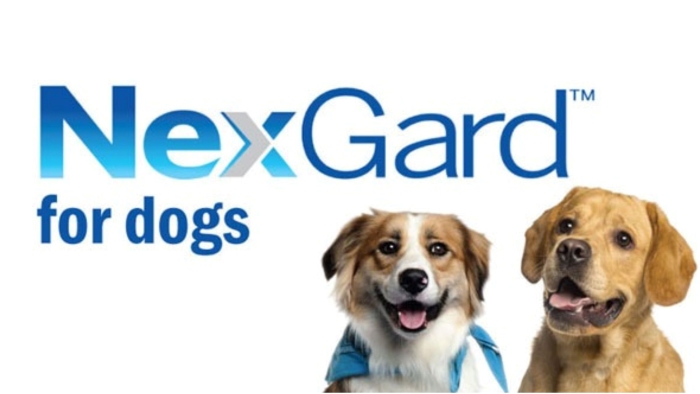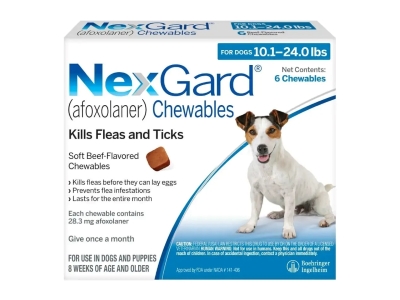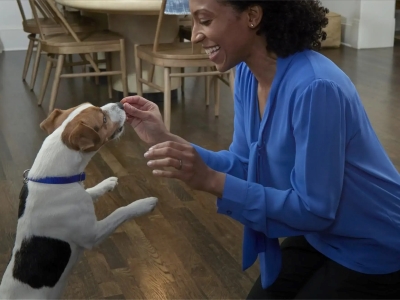As responsible pet owners, ensuring the health and safety of our furry companions is a top priority.
One of the most common concerns for dog owners is protecting their pets from pesky parasites like fleas and ticks.

NexGard, a widely used oral flea and tick treatment, has gained popularity in recent years. But with any medication, the question of safety arises.
In this article, we’ll delve into the world of NexGard and explore whether it’s truly safe for your beloved canine companion.
Contents
Understanding NexGard: What Is It?
NexGard is an oral flea and tick preventative treatment for dogs.

It contains afoxolaner, an active component designed to target and eradicate fleas and ticks that can cause irritation and disease transmission. Boehringer Ingelheim produces it.
Unlike traditional topical treatments, NexGard comes in the form of a tasty, beef–flavored chewable, making it a convenient option for pet owners.
Is Nexgard Safe for Dogs?
Yes, Nexgard is a safe and effective flea and tick treatment for dogs when used according to the label directions and under the guidance of a veterinarian.
It can protect your dog from harmful parasites and diseases, such as Lyme disease[1].

However, like any medication, it may cause side effects or interactions in some dogs, so you should always be aware of the potential risks and benefits of using Nexgard.
You should also follow the dosage instructions carefully and report any problems to your veterinarian.
Nexgard is one of the options available for flea and tick prevention for dogs. You should weigh the pros and cons of each product and choose the one that suits your dog’s needs and preferences best.
Nexgard can help protect your puppy from fleas and ticks that can cause inconvenience and illness.
By following these tips, you’ll ensure that your pooch gets the most excellent benefits from this medicine:
- Weigh your dog regularly to make sure you are using the correct product size.
- Give Nexgard once a month on the same day every month.
- Store Nexgard in a cool, dry place away from children and pets.
- Wash your hands after handling Nexgard.
- Do not give Nexgard to cats, pigs, birds, or any other animals.
Remember to always consult your veterinarian before starting or changing any medication for your dog.
How Does Nexgard Work?
Nexgard kills fleas and ticks by interfering with their nervous system impulses. After injection, it begins eradicating ticks and fleas within 48 hours.
By eliminating fleas before they can lay eggs, it also stops fresh infestations.
The American dog tick, the black–legged tick, the lone star tick, and the brown dog tick are the four common tick species that Nexgard is effective against.
By eliminating black-legged ticks, it is also FDA-approved for preventing Lyme disease in dogs.
How Is Nexgard Given?
Nexgard is administered orally once a month to dogs weighing 4 pounds or more and aged 8 weeks or older.
It comes in four sizes of beef-flavored chews that most dogs find palatable.
You can give Nexgard with or without food, but make sure your dog chews it completely and does not swallow it whole.
If your dog vomits within two hours of taking Nexgard, you should give him another dose.
| Body Weight | Afoxolaner Per Chewable (mg) | Chewable size (g) | Chewables Administered |
| 4.0 to 10.0 lbs. | 11.3 | 0.5 | One |
| 10.1 to 24.0 lbs. | 28.3 | 1.25 | One |
| 24.1 to 60.0 lbs. | 68 | 3 | One |
| 60.1 to 121.0 lbs. | 136 | 6 | One |
Administer the appropriate chewable mixture to dogs weighing more than 50 kg.
What Are the Possible Side Effects of Nexgard?
Most dogs handle Nexgard well in general; however, certain negative effects may arise.
Vomiting, diarrhea, dry or itchy skin, sluggishness, loss of appetite, and nausea are the most frequent adverse effects.
These adverse effects, which are frequently modest and transitory, may not require medical attention unless they worsen or persist.
However, some rare but serious side effects may also occur.
These include allergic reactions (such as hives or facial swelling), neurological side effects (such as muscle tremors, lack of coordination, or seizures), and kidney problems (such as decreased urination, edema, lower back pain, or rash).
These side effects are potentially life–threatening and require immediate veterinary attention.
If you notice any signs of an adverse reaction in your dog after giving Nexgard, stop giving the medication and contact your veterinarian right away.
What Are the Possible Interactions of Nexgard?
Nexgard may interact with some other medications or supplements that your dog is taking. Some examples are:
- Atazanavir, cilostazol, indinavir, and nelfinavir are antiviral drugs that may have reduced effectiveness when taken with Nexgard.
- Warfarin: This is an anticoagulant drug that may have increased bleeding risk when taken with Nexgard
- Herbal products: Some herbal products may have additive or antagonistic effects when taken with Nexgard
Most dogs handle Nexgard well in general; however, certain negative effects may arise. Vomiting, diarrhea, dry or itchy skin, sluggishness, loss of appetite, and nausea are the most frequent adverse effects.
These adverse effects, which are frequently modest and temporary, may not require medical attention unless they get worse or persist.
What Are the Precautions for Nexgard?
The use of Nexgard in humans, cats, or other animals is not recommended. It should be kept out of children’s and animals’ reach.
When you are finished handling this drug, wash your hands. After administering Nexgard to your dog, you should keep an eye out for any symptoms of an adverse reaction.
Visit your veterinarian if you have any questions or worries regarding Nexgard.
Alternative Options of Nexgard
There are other options for flea and tick prevention if you are uncomfortable using NexGard on your dog or if your pet reacts poorly to it.
These consist of natural therapies[2], collars, and topical treatments.
Your veterinarian can assist you in researching these choices and choosing the best course of action for your dog’s requirements.
FAQs
Is NexGard suitable for all dog breeds and sizes?
NexGard is designed for a wide range of dog breeds and sizes. However, consult your veterinarian to ensure it’s appropriate for your specific dog’s health and needs.
Can I give NexGard to my pregnant or nursing dog?
It’s recommended to consult your veterinarian before administering NexGard to pregnant or nursing dogs. They can provide guidance based on your dog’s individual situation.
Is NexGard safe for puppies?
NexGard is generally safe for puppies that are at least 8 weeks old and weigh at least 4 pounds. Your veterinarian can provide specific guidance based on your puppy’s age and weight.
Is NexGard safe for dogs with sensitive stomachs?
While NexGard is well-tolerated by many dogs, some may experience mild gastrointestinal upset. If your dog has a sensitive stomach, discuss this with your veterinarian to determine the best course of action.
Can my dog swim or bathe after taking NexGard?
Water has no effect on NexGard, so your dog can continue to swim or take regular baths after taking the medicine. Even after being submerged in water, the therapy is still effective.
Conclusion
The question of whether NexGard is safe for dogs requires careful consideration of its effectiveness, potential side effects, and your dog’s unique health profile.
Although most dogs handle NexGard well, it is crucial to keep an eye on your pet following administration and speak with your doctor if you have any concerns.
Ultimately, maintaining open communication with your veterinarian and staying informed about the latest research will help you make an informed decision about the best flea and tick prevention strategy for your beloved furry friend.
Reference:
- Lyme Disease | Cornell University College of Veterinary Medicine
- Natural home remedies for flea and tick control | PetMD

Dania is a dog groomer living in California, who loves styling dogs. She often uses dog accessories to keep them distracted while grooming. She is also a dog parent to a Pomeranian, Duke. It’s because of him she is always on a lookout for the best dog foods, toys, other dog accessories, and ways to keep him equipped, healthy and happy.


